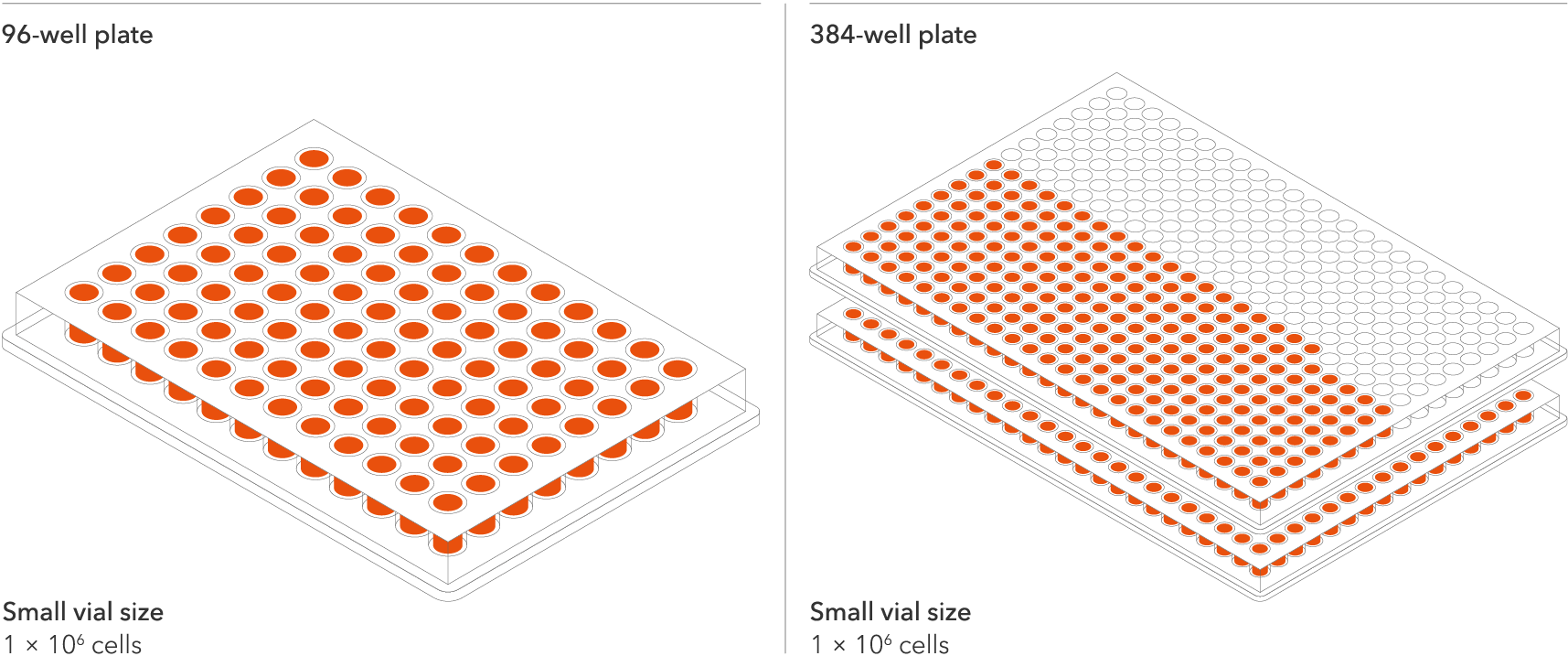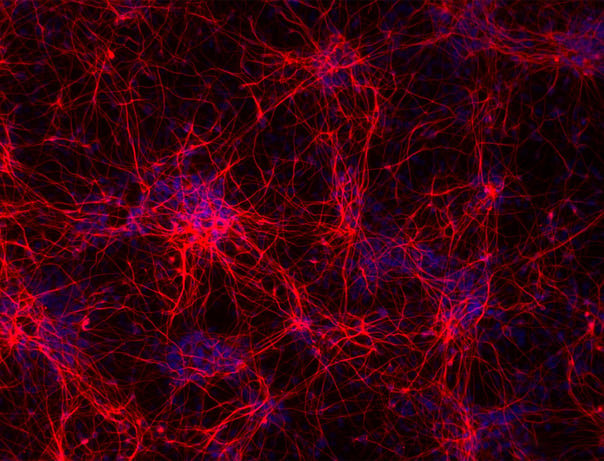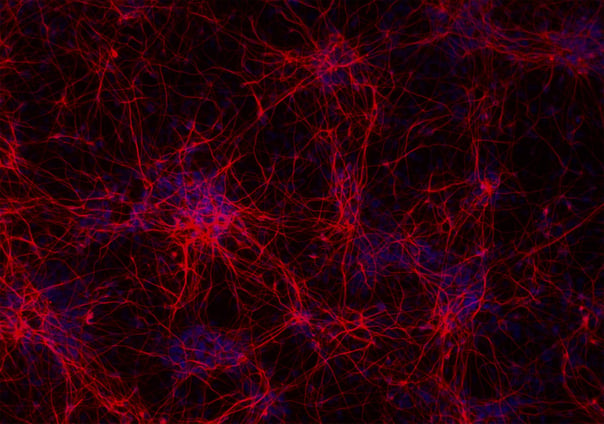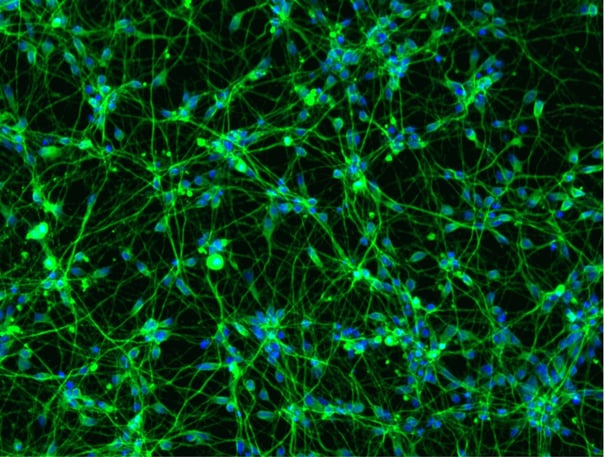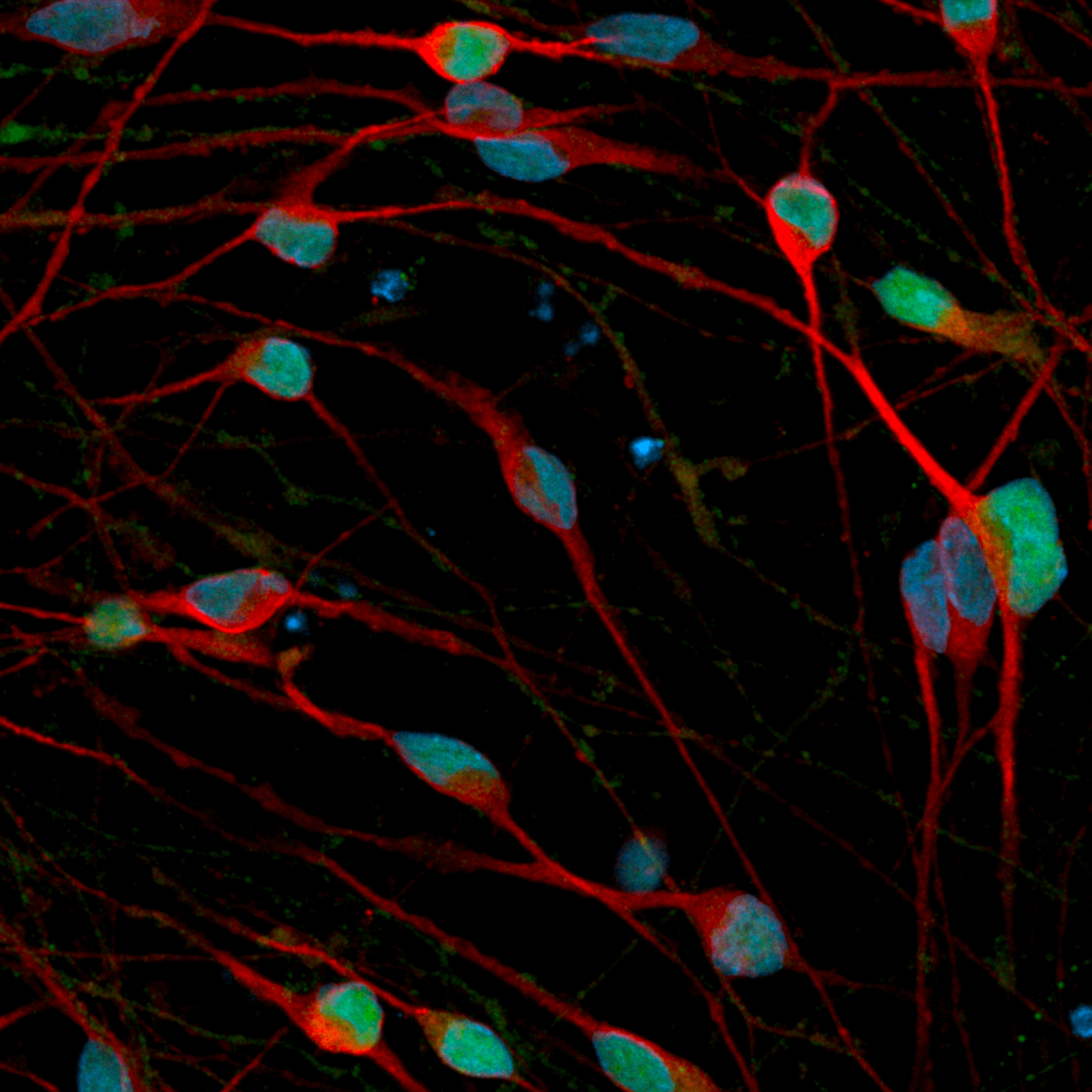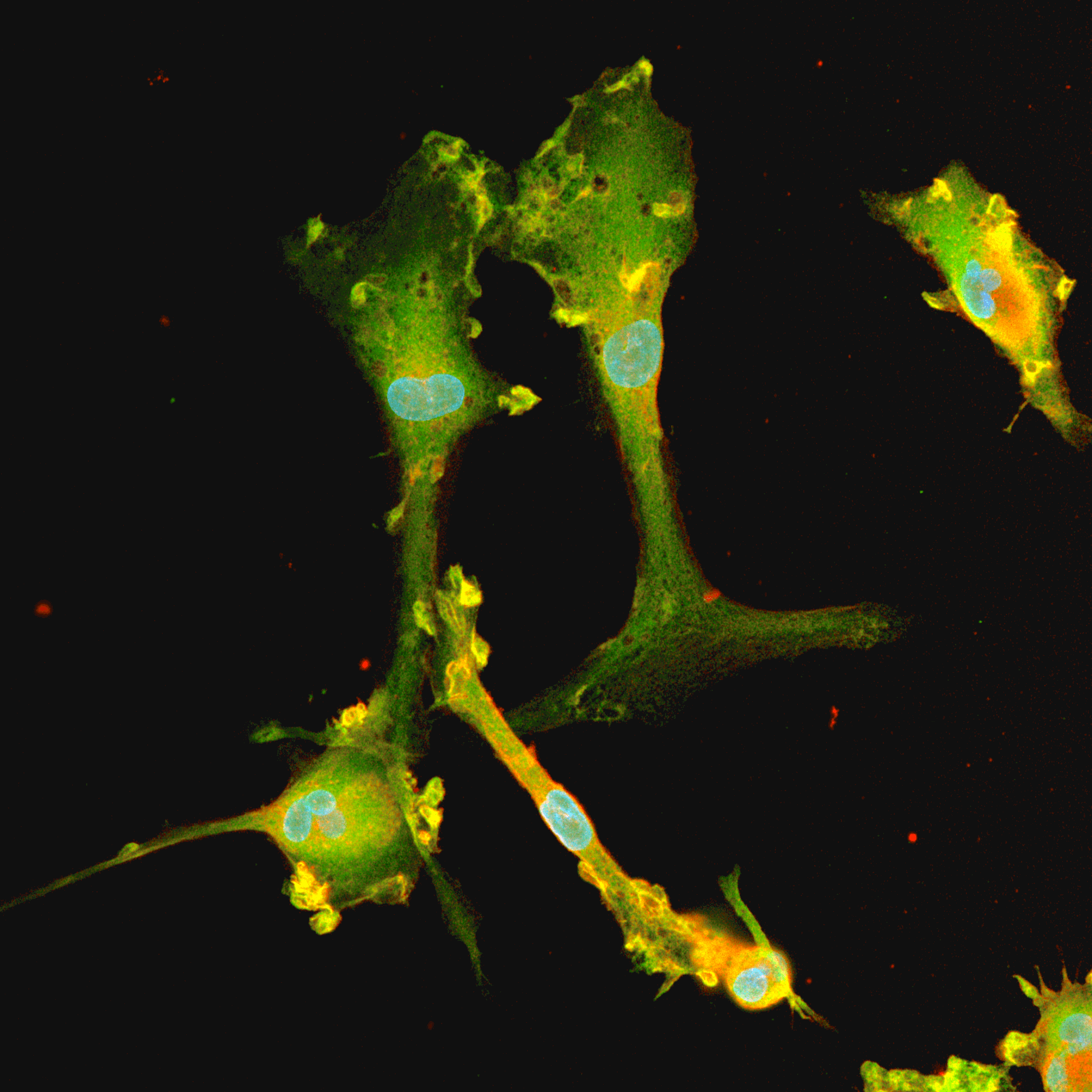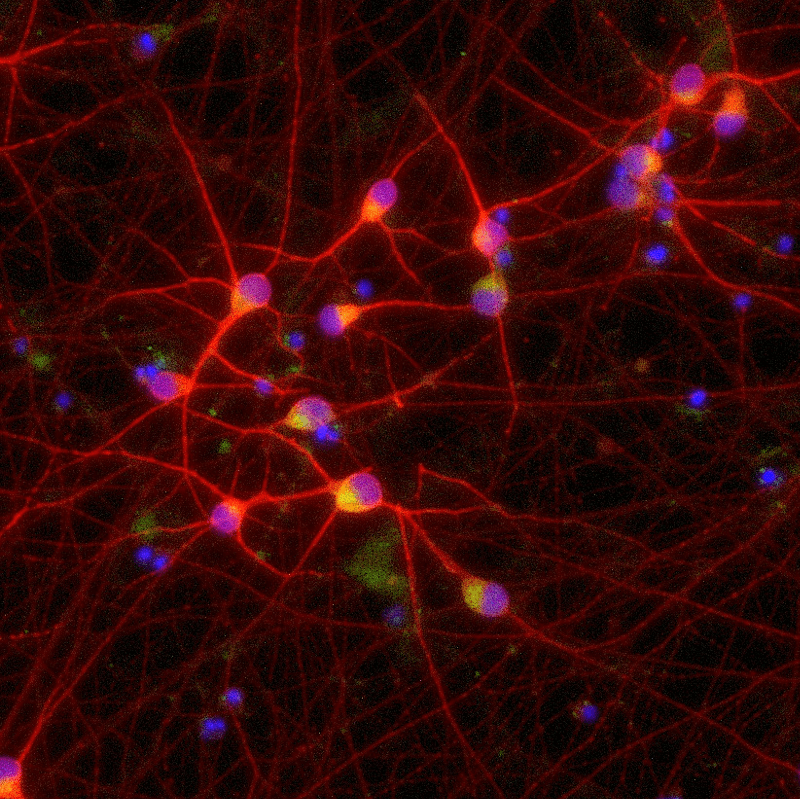ioAstrocytes are functional human iPSC-derived astrocytes, deterministically programmed using opti-ox technology that convert consistently into defined astrocytes within days. Cells demonstrate expected stellate morphology, express key astrocytic markers (SOX9, EAAT1, S100B and Vimentin), are capable of phagocytosis, cytokine secretion, and modulation of neuronal activity in co-culture.
Early access product now available, contact us for more information.
ioAstrocytes are designed for ease of use, delivered cryopreserved and supported by open-source media and protocols to be cultured with other CNS cell types such as ioGlutamatergic Neurons.
The cells recapitulate key human astrocytic functions, including mediating an inflammatory response, disposal of unwanted materials and modulation of neuronal activity in co-cultures. Multiple lots of cells were investigated by bulk-RNA sequencing, each displaying highly equivalent transcriptomic profiles, with less then 0.5% differentially expressed genes, enabling scientists to generate reproducible data, consistently.
ioAstrocytes bridge translational gaps and overcome limitations associated with the generation of accurate in vitro models of the human brain, to support neurodegenerative disease research and therapeutic development.








